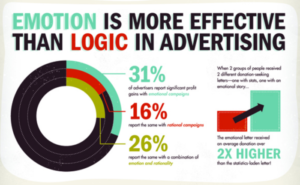Introduction:
Why Blog's Visibility and Ranking Matter
With millions of blogs competing to be seen, it is important to make sure your content doesn’t get lost in the competition. Blog recognition and ranking on search engines such as Google shows how easily your audience can find your content. The higher your blog ranks the more visitors you attract. Resulting in increased engagement, authority, and even monetization opportunities.
Lorem
sit amet, consectetur adipiscing elit. Ut elit tellus, luctus nec ullamcorper mattis, pulvinar dapibus leo.
This is where search engine optimization (SEO) begins to work. SEO has different features that help search engines understand and index your content. It ultimately improves your blog’s recognition. If you want to optimize your blog then you can reach a huge audience and establish your impact online.
In this blog post, we’ll explore very important key points to enhance your blog’s recognition and ranking. We will look through effective keyword research and on-page SEO techniques to build quality backlinks and utilize social media in the right way. you’ll discover practical steps to take your blog to higher grounds.
Research and Identify Keywords
Keywords are known as the backbone of search engine optimization (SEO). These are the words and phrases that people type into search engines when they are looking for certain information. If you are using the right keywords then there is a high chance that your blog is more likely to show up in search results. resulting in increased recognition and traffic. But finding the right keywords isn’t just about throwing in as many terms as possible but understanding your audience and what they’re looking for.
Significance of Keyword Research
Keyword research helps you understand the language your target audience uses the most. You can create content that aligns well with your audience By knowing the questions they ask and the terms they use the most to search. This can lead to higher engagement, more backlinks, and in the end better ranking on search engines. Also, keyword research can show gaps in the market. this helps you to create unique content that draws attention from the competition.
Tools and Methods to Find Relevant Keywords
Many tools can help you identify relevant keywords for your blog. Here are some popular options:
Google Keyword Planner:
It is a free tool that gives keyword suggestions and estimates of search volume. It’s a good starting point for you to start a keyword research.
Ahrefs:
It is a thorough SEO tool that gives keyword suggestions, search volume data, and insights into keyword difficulty.
SEMrush:
Another in-demand SEO tool that gives detailed keyword analysis which includes competitive keywords and related terms.
Ubersuggest:
This is a beginner tool that generates keyword ideas based on a primary keyword or domain name.
To use these tools effectively then start by brainstorming a list of keywords that are based on your blog’s niche and topics. After that input these keywords into the tools to get additional suggestions and data on their search volume and competitiveness. Always plan for a those keywords which have high-volume .keywords with longer phrases with lower search volume but higher specificity.
Tips for Selecting the Best Keywords for Your Blog's Niche
You need to understand that Choosing the best keywords for your blog consists of a good balance between search volume, competition, and relevance. Here are some tips to guide your selection:
Relevance:
Make sure the keywords you choose are directly related to your content and align well with your target audience.
Search Volume:
Higher search volume shows greater interest of audience but it also means more competition. Plan for keywords with moderate to high search volume.
Competition:
Some keywords may be highly competitive which makes them difficult to rank. Look for keywords with lower competition that offer a more targeted approach.
Intent:
You must Consider the search intent behind the keywords. Are people looking for information, products, or solutions? Plan your keywords with the type of content you create.
You can identify the best keywords for your blog’s niche by following these effective tips. This will not only improve your recognition but also help you create content that meets the needs and interests of your target audience.
Optimize On-Page SEO
After you identify the right keywords then the next step is to optimize your on-page SEO.
On-page SEO is making adjustments to single pages on your blog to improve their search engine ranking and attract traffic. Let’s find the key elements of on-page SEO and how to make them work best for your blog.
Key Elements of On-Page SEO
Many elements contribute to on-page SEO. These are :
Title Tag:
The title tag is known as a clickable headline that mainly appears on search engine results pages (SERPs). It’s one of the most important factors for SEO. Always Make sure your title tag includes your based keyword and is attractive enough to encourage clicks. The target for a title length between 50 and 60 characters is to make sure it displays properly on SERPs.
Meta Descriptions:
The meta description is known as the summary that appears below the title tag on SERPs. Meta descriptions don’t directly impact search engine ranking but they can influence click-through rates. Create a precise and engaging meta description that includes your primary keyword. It should provide a clear idea of what the content is about.
Headers (H1, H2, H3, etc.):
Headers mainly organize your content and make it easier for readers and search engines to understand. You must use H1 for your main heading, and H2 and H3 for subheadings. Add keywords in your headers but keep them relevant to the content. This not only helps with SEO but also improves readability.
Importance of High Quality Content
High quality content is the base of successful on-page SEO. Search engines target to deliver valuable content to users. so it is very important to create well-researched, engaging, and informative content. Here are some tips for maintaining high-quality content:
Originality:
You must Avoid duplicate content. Create unique, original posts that give value to your audience. If you reference other sources then give proper credit and add your perspective.
Depth:
Plan for in-depth content that thoroughly addresses a topic. Longer content tends to perform better however it must remain focused and relevant throughout.
Readability:
Use clear, easy and simple language. Break the large blocks of text with paragraphs, bullet points, and images. Readable content is more attractive to both users and search engines.
Use of Keywords Naturally in Content and Avoiding Over-Optimization
it’s important to use keywords naturally throughout your content. Another important point is to stop overusing the feature of Keyword stuffing which is an attempt to manipulate search engines. Resulting in penalties and harm to your ranking. Here’s how to avoid over-optimization:
Natural Placement:
Always Use keywords where they naturally fit like in the title, headers, and throughout the content. Avoid at any cost forcing keywords into sentences or overloading them in a single paragraph.
Keyword Variations:
You should use synonyms and related terms to keep the content natural and avoid repetition. This will help you rank for a broader range of search queries.
Quality Over Quantity:
Always Focus on creating high-quality content with the right keywords instead of trying to cram in as many as possible. Search engines always prioritize valuable content, not keyword-heavy content.
Internal and External Linking Strategies
Links are another important feature of on-page SEO. Internal links help to guide users to related content within your blog. on the other hand, external links point to reputable sources outside your blog. Here’s how to use both efficiently.
Internal Links:
Add internal links to help readers with related posts and keep them on your site longer. This can also help search engines scan and organize your blog more effectively.
External Links:
Linking to authoritative external sources can enhance your content’s credibility. It also provides additional value to readers. Make sure these links are relevant and not excessive.
Build Quality Backlinks
Making high-quality backlinks is an important feature of search engine optimization (SEO). Backlinks work as votes of confidence from other websites. With the help of Backlink, search engines know that your content is valuable and high quality. As a result, it can help improve your website’s authority and search engine rankings.
Strategies to Get High-Quality Backlinks
Getting high-quality backlinks needs a proper and preplanned strategy. Here are some of the common effective strategies:
Guest Posting:
One of the best ways to earn backlinks is to Write and publish articles on other websites related to your niche. When guest posting always confirm the content is high quality and relevant to the host website’s target audience.
Collaborations:
You can get mutual backlink opportunities by Partnering with other websites or businesses for content creation, research and projects. Collaborations can be co-authored articles, joint studies, or shared resources.
Creating Link-Worthy Content:
Developing high-quality content that others naturally want to link to is the best way to get backlinks. This includes in-depth guides, unique research, infographics, or other valuable resources.
Networking and Relationships in the blog industry:
You can never deny the importance of Building relationships with industry leaders, influencers, and other website owners. It can open doors for backlink opportunities. Make sure to attend industry events, online forums, and social media to connect with others in your field.
Utilizing Social Media and Content Marketing
When it comes to marketing your blog then social media is your best friend. It’s not just about sharing posts but building a community to get traffic:
Role of Social Media in Boosting Visibility
Social media platforms like Instagram, Twitter, Facebook, LinkedIn, and others give an amazing opportunity to reach a large audience. These platforms let you promote your content to people who might not find you otherwise. The main factor is to use the right platform for your audience and each has its vibe and demographic. When you use social media effectively, your content has a chance to go viral which dramatically enhances your blog’s recognition.
Effective Social Media Strategies for Promoting Blog Content
To make the most of social media, you need a plan. Here are some strategies that work:
Consistent Posting:
Make sure to Regularly share your blog content to make your audience engaged. Take help from tools like scheduling tools to keep consistency without overloading yourself.
Visual Content:
Use some social media strategies like posting Eye-catching images, graphics, or short videos to grab the attention of the audience. This is especially works on platforms like Instagram and TikTok.
Interactive Content:
Do Polls, Q&A sessions, and live videos. It will create engagement and encourage interaction with your audience.
Hashtags and Keywords:
Always Use relevant hashtags and keywords to make your content recognizable. This helps you reach people who are interested in your niche.
Collaborations and Cross-Promotion:
Collaborate with other bloggers and social media influencers to expand your reach. This can help you yo get to a whole new set of followers and get to know about your blog.
Conclusion
It is concluded that With millions of blogs out there, making yours noticeable can be a challenge. But if you focus on major factors of search engine optimization (SEO) then you can enhance your blog’s recognition and attract more visitors.
In short, optimizing your blog for recognition and ranking involves a mix of keyword research, on-page SEO, quality backlinks, and strategic use of social media. With these effective methods, you will not only increase your blog’s recognition but also build a strong connection with your audience. Always Keep updating your strategies, stay patient, and watch your blog grow.



